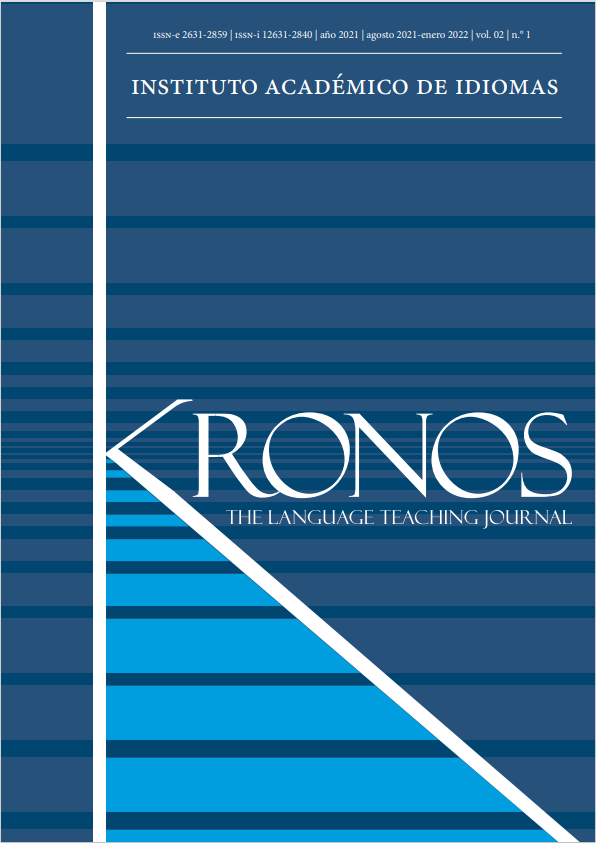Cyberbullying in adolescents and its increase due to new technologies
DOI:
https://doi.org/10.29166/kronos.v2i1.3023Keywords:
Harassment, technology, consequences, knowledge, adolescentsAbstract
Currently the whole world is living a pandemic product of the virus Covid-19, reason why different aspects of daily life were affected, one of them, the education, that changed from been face-to-face to being online taking with him problems from physical world, in this case “bullying”, to the digital world, leading to cyberbullying. In this social problem the most vulnerable are teenagers, who when are victimized by an aggressor, present negative consequences in various aspects of their lives, reason why the present investigation was carried out, which main objective is identify the consequences of cyberbullying in adolescents, in order to present possible solutions to this form of harassment, also know the percentage of cyberbullying victims within the analyzed population and if it is aware of it. The present research has a qualitative nature, and the data collection tool implemented was the survey of a sample of 186 students that belong to educational units in Quito - Ecuador. Through the surveys it was possible to register that 86% of the analyzed sample has knowledge about cyberbullying, the rest have a vague idea or do not know anything about it, it was also possible to recognize that 22.6% of the sample has suffered from cyberbullying, that despite being a low percentage indicates that there are existing cases and among other situations that could be corroborated with the data collection tool. Then, through the application of the survey and the support of a structured theoretical framework, it was concluded that the main consequences of cyberbullying are emotional (behavior), academic (performance in studies) and social (interpersonal relationships).
Downloads
References
The Characteristics of Bullying Victims in Schools. National Centre for Social Research (Marzo 2010)
La metamorfosis del espacio mediático. La Generación Interactiva en Iberoamérica. V Congreso sobre Comunicación y Realidad. Jorge del Río Pérez (2009)
Kit Stop Ciberbullying. Caja de herramientas para la prevención del ciberacoso. Aftab, P., Flores, J. & Casal, M.(2009)
Miniwatts Marketing Group (30 de noviembre de 2015).Internet World Stats (en inglés). Consultado el 30 de mayo de 2016.
Anon. n.d. “Cyberprogram 2.0: Programa de Intervención Para Prevenir y Reducir El ... - Maite Garaigordobil Landazabal, Vanesa Martínez-Valderrey - Google Libros.” Retrieved February 1, 2021a (https://books.google.com.ec/books?id=k8PwoAEACAAJ&dq=Méndez+%26+Mejía,+2010+bullying&hl=es&sa=X&ved=2ahUKEwiGmYi_o8ruAhXMxFkKHTvfCQ8Q6AEwAXoECAEQAg).
Anon. n.d. “Libro Carozzo, Julio. Comp. (2013), Bullying Opiniones Reunidas.” Retrieved January 28, 2021b (https://es.calameo.com/read/0035904623963ca085ef9).
María, Autora, and José Bartrina Andrés. 2012. Análisis y Abordaje Del Acoso Entre Iguales Mediante El Uso de Las Nuevas Tecnologías.
Bauman, S. (2011). Cyberbullying: What Counselors Need to know. United States of America: American Counseling Association.
Morales, T. S. (2014). Cyberbullying, acosos cibernético y delitos invisibles. Toluca: Universidad Autónoma del Estado de México: Experiencias psicopedagógicas.
Olweus, D. (1999). Bullying at School: Basic Facts and Effects of a School Based Intervention Program. En D. Olweus, Bullying at School: Basic Facts and Effects of a School Based Intervention Program (pág. 11). Bergen: Association for Child Psychology and Psychiatry.
Contreras Cázarez, C. R., & Campa Álvarez, R. (2017). Caracterización del perfil de los estudiantes de secundarias en el acceso y uso de Internet a partir de las TIC. Edutec. Revista Electrónica de Tecnología Educativa, 61, a367. https://doi.org/10.21556/edutec.2017.61.941
Duart, J. M., & Lupiáñez, F. (2005). E-strategies in the introduction and use of information and communication technologies in the university. RUSC. Universities and Knowledge Society Journal, 2(1). https://doi.org/10.7238/rusc.v2i1.243
Espinar Ruiz, E., & González Río, M. J. (2009). Jóvenes en las redes sociales virtuales: un análisis exploratorio de las diferencias de género. Feminismo/S, 14, 87–105. https://doi.org/10.14198/fem.2009.14.06
Mendoza López, E. (2012). Núm. 3 Julio-Septiembre. In Pediatría de México (Vol. 14). www.medigraphic.org.mx
Una breve historia de las redes sociales. (n.d.). Retrieved February 2, 2021, from https://blog.hootsuite.com/es/breve-historia-de-las-redes-sociales/
Collado, C., Baptista Lucio, P., & Hernández Sampieri, R. (2014). Metodología de la Editorial McGraw Hill
Priegue Caamaño, D., López Castro, L., & Outón Oviedo, P. (2017). La prevención e intervención en el cyberbullying: ¿qué papel juegan las familias? Revista de Estudios e Investigación En Psicología y Educación, 05, 122. https://doi.org/10.17979/reipe.2017.0.05.2419
Castillo, A. l., Salazar, J. M., Velázquez2, V. M., & García Maldonado, G. (2011). Ciberbullying: forma virtual de intimidación escolar. Revista Colombiana de Psiquíatra, 40(1), 1. Retrieved 01 12, 2020, from https://www.sciencedirect.com/science/article/abs/pii/S0034745014601086
Andrade, J., 2021. Ciber bullying. [online] scielo conicyt. Available at: <https://scielo.conicyt.cl/scielo.php?script=sci_arttext> [Accessed 21 March 2021].
Abdalá, A., 2008. contribuciones a las ciencias sociales. [online] Eumed.net. Available at: <https://www.eumed.net/rev/cccss/29/ciberbullying.pdf> [Accessed 21 March 2021].
Published
How to Cite
Issue
Section
License
Copyright (c) 2021 Miguel Angel Bastidas Velandia, Sebastian Bazurto, Nicolas Bedoya, Nicolas Barrionuevo, Steven Artos

This work is licensed under a Creative Commons Attribution-NonCommercial-ShareAlike 4.0 International License.












